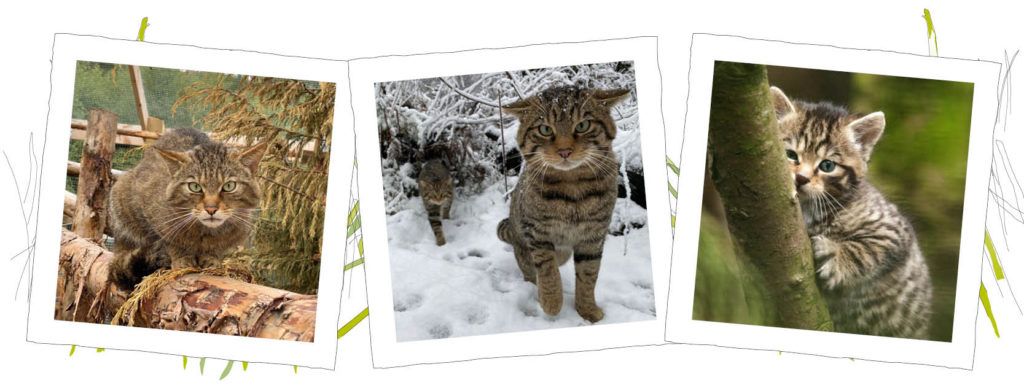Wildcat appeal
I'll help save wildcatsClinging on by a claw
Wildcats used to live all over Britain, but lost so much habitat, and were persecuted so heavily for centuries that by the First World War they were only found in north west Scotland. Once persecution eased, and their woodland habitat increased in the 20th century, they began to recover. The very few left in the remote areas of Scotland faced emerging threats including road traffic, their susceptibility to disease, and interbreeding with domestic cats. In 2019 the population was considered non-viable by the IUCN Cat Specialist Group, meaning there are now simply too few of them to be able to recover without help.

We want to see wildcats thriving once more. We’re now in our third year of supporting the Saving Wildcats’ team – pledging £100,000 of funding over six years to breed and release wildcats into the Cairngorms National Park.
Years of preparation came to fruition last summer when Saving Wildcats released 19 wildcats, born and raised at the centre, into the wild. This is an extraordinary achievement. The wildcats are now adapting to life in the Cairngorms. Most have stayed local to their release sites, in grassland and woodlands areas with plentiful shelter, food and water. They’re being monitored via their GPS-radio collars and over 100 camera-trap wildlife cameras. The collars transmit a radio signal at timed intervals and the team use the signal to locate the cat.
Once a team member gets relatively close to a wildcat, they can download data from the collar, which shows where the wildcat has been. This means the team have to get to some hard to reach areas, but everything the team learns will be used to inform future releases, both in Scotland and further afield.
A further 13 kittens were born in 2023 at the breeding centre. They’re now in large pre-release enclosures full of foliage and dens. The cats are moved in one-by-one when they’re old enough – health checked, vaccinated and acclimatised so their transfer from mum to new home is calm. Once in the enclosures, they have very little interaction with humans as they need to remain as wild as possible to maximise their survival post-release.
Would you be able to help boost the wildcat population? Donations from PTES supporters have already helped:
• fund preliminary research
• construct pre-release enclosures at the breeding-for-release centre
• pair up wildcats each breeding season
• provide food and shelter for wildcat parents and kittens
• design and implement tools for the wildcat kittens to develop their skills before a challenging life in the wild
With so few wildcats living in the wild, this is our best chance to save the species in the UK. A donation today could help release a wildcat back to the wild and get one step closer to saving them. Your support really could make a tangible difference to a species on the brink.
Thank you.
Header image credit Saving Wildcats. Central images credit RZSS and Saving Wildcats.

